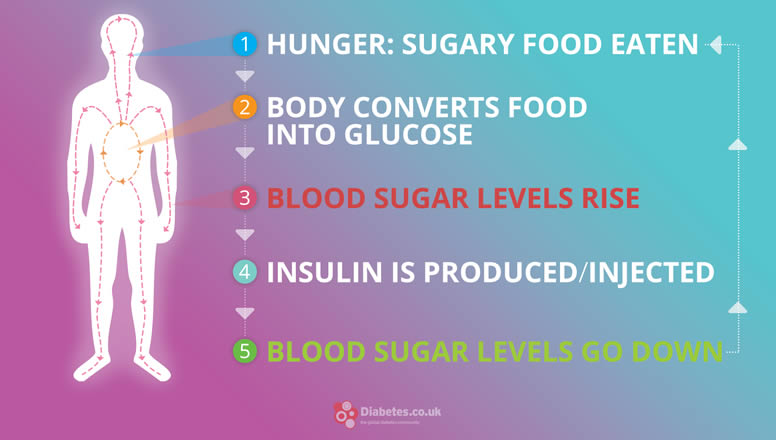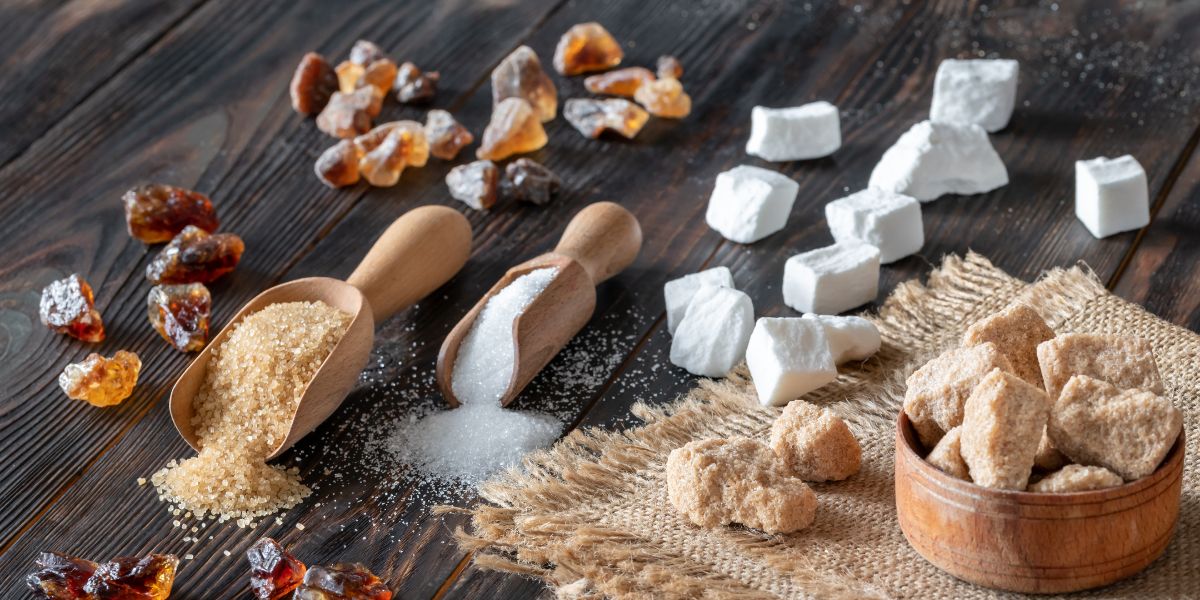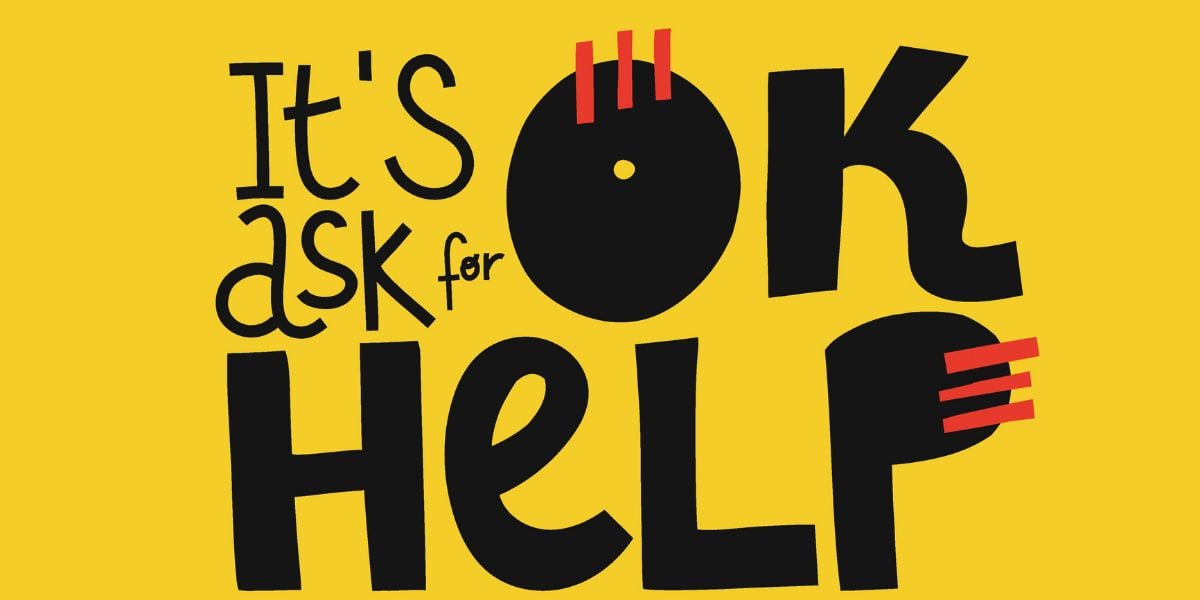Sugar has become perhaps the most discussed dietary issue in recent years with more and more research studies linking the effects of sugar to greater risks of obesity and type 2 diabetes.
Statistics show that most of us in the UK are consuming more sugar than is good for our health.
Many of us are unaware that starchy foods like bread, rice or potatoes are broken down by digestion into surprisingly large amounts of sugar; a small slice of wholemeal bread is equivalent to three spoonful’s of sugar. It’s important therefore that your diet does not contain too much carbohydrate either.
A major cause of this has come from the high amounts of sugars added to a wide range of processed foods.
Sugar has extra relevance to people with diabetes as sugar has a formidable effect in raising blood sugar levels.
Sources of sugar
Sugar in the diet can be found in 3 forms. Sugar can be:
- Natural – as found in fruit and honey
- Added – as found in biscuits or cereals
- The product of the digestion of more complex carbohydrates (e.g. bread)
There are natural sugars found in fruit, milk based products and vegetables.
Added sugars, also called free sugars, refer to the sugars that are added to a whole range of processed foods and drinks, including microwave meals, pasta sauces, breakfast cereals, sweetened drinks and desserts.
Sugar and type 2 diabetes
Sugar is a form of carbohydrate that will quickly affect your blood sugar levels if you have diabetes. All carbohydrate raises blood glucose levels and sugar has a very quick effect.
It is therefore important not to have too much sugar in your daily diet.
‘Sugar diabetes’
Type 2 diabetes was once referred to as sugar diabetes – because sugar is at the heart of the problem.
For somebody with diabetes, it is the total sugar burden from any of the three sources (natural, added or as a product of the digestion of complex carbohydrate) which need taking into account to keep blood glucose levels low.
Don’t worry, reducing sugar intake reduces the likelihood of needing medication and diabetes-related complications.
Research has shown a close association between sugar intake and development of type 2 diabetes. The more sugar in the diet, the higher the risk of type 2 diabetes.
This doesn’t mean that your type 2 diabetes has necessarily been caused by eating too much sugar although sugar intake is one of the most important factors.
Others include stress, lack of exercise and a genetic predisposition.
Added sugar – why is it a worry?
All age groups are currently consuming more added sugar than the recommendations according to the National Diet and Nutrition Survey which is carried out by Public Health England.
Added sugars have become a real problem because most of us aren’t aware of just how much sugar we are taking in when having what many of us consider everyday foods.
Is there a recommended maximum added sugar intake?
The Scientific Advisory Committee on Nutrition (SACN), which advises the government on nutrition guidelines, recommends the following limit for added sugars in the diet.
| Age group | Maximum added sugar value |
|---|---|
| 4 to 6 years old | No more than 19g |
| 7 to 10 years old | No more than 24g |
| 11 or over | No more than 30g |
For reference : 4 grams of sugar is equal to a teaspoon of sugar.
Sugars are being added to a huge range of foods from bread and hams to more obvious foods such as cakes and biscuits.
The sugar makes food designed to have a long shelf life more palatable but this is having a negative effect on health of those of us that are living off these foods.
Most of us will be aware of more obvious sugary, such as sugary fizzy drinks, cakes and biscuits but there are also other foods which contain a lot of sugar that may not be immediately obvious.
Three different sources of sugars that make up our total dietary ‘sugar burden’; shown as 4g teaspoon of table sugar equivalents:
| Naturally occuring sugar (1) | Foods with added sugar (2) | Foods digested down into sugars (3) |
|---|---|---|
| Banana 4.9 teaspoons/100g | Coco Pops (ave) 24.4 teaspoons/100g | Brown bread 10.8 teaspoons/100g |
| Honey 17.6 teaspoons/100g | Fanta (Orange) 3.4 teaspoons/100ml | Boiled spaghetti 3.7 teaspoons/100g |
| Skimmed Milk 0.9 teaspoons/100ml | Digestive biscuits 8.8 teaspoons/100g | French fries 5.1 teaspoons/100g |
| Raisins 17.1 teaspoons/100g | Malt loaf 14.7 teaspoons/100g | Basmati rice 6.8 teaspoons/100g |
| Apple juice 4.3 teaspoons/100ml | Raspberry yoghurt 2.4 teaspoons/100g | Baked potato 6.3 teaspoons/100g |
Note: as each food would effect blood glucose, from the International tables of glycaemic index and glycaemic load (Atkinso, Foster-Powell et al. 2008) as per the calculations in a paper submitted to The British Journal of Obesity ‘It’s the glycaemic response to, not the carbohydrate content of food that matters in diabetes and obesity: The glycaemic index revisited.’ D J Unwin et al.
What is not so well known is that starchy carbohydrates such as bread, rice potatoes or pasta are broken down by digestion into surprising amounts of sugar. This means that just avoiding sugar itself may not always be enough. This is why recent government (NICE) guidelines ‘encourage high-fibre, low glycaemic index sources of carbohydrate in the diet’.
Why is sugar bad for us?
Sugar provides energy but has no other nutritional value. Sugar is therefore often referred to as empty calories.
Sugar raises blood glucose levels quickly and requires insulin to be produced (or taken by injection) as high blood glucose levels over time cause damage. Insulin causes the cells of your body to take up the free glucose in your bloodstream. So having too much sugar means having or needing more insulin
As many of the cells taking up glucose are fat cells, insulin itself can give rise to weight gain and the development of insulin resistance, the hallmark of type 2 diabetes. [166]

Many people find that sugar has addictive qualities meaning that we may crave sugary foods even if we know they’re not good for us. [167]
Health problems connected with sugar
Sugars, and particularly the problem of added sugars, have been linked with increased risks of the following health problems: [168] [169]
How to cut down on sugar
The good news is that reducing sugar intake reduces the likelihood of needing medication and diabetes-related complications.
Cutting back on all sources of sugar is a great strategy to stay healthy.
- Cut down on sugary drinks – non-diet versions of cola, lemonade, tonic water
- Swap fruit juices for water and whole fruit
- Replace sugary cereals with plain porridge, whole grain cereals or lower carb breakfasts
- Avoid having ready meals, tinned meals on a regular basis
- Make your own pasta or curry sauce – you can make larger portions and freeze what you don’t need for a future meal
- Get into the practice of having fruit instead of sugary snacks or desserts
- Don’t have takeaways more than once a fortnight




